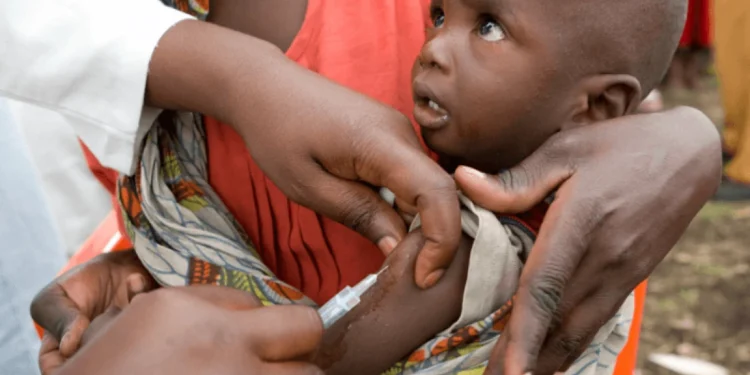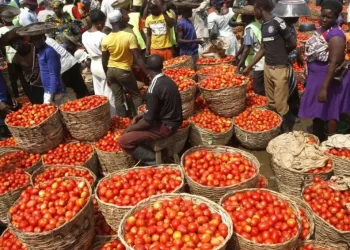Nigeria’s northeastern state of Adamawa has recorded at least 42 deaths due to the measles outbreak and this was disclosed by the state’s health commissioner.
The Commissioner of Health and Human Services, Felix Tangwame gave the figure to newsmen shortly after the State Executive Council meeting held at the Government House, Yola.
Tangwame said the measles outbreak affected eight wards in Mubi and seven wards in Gombi local government areas, with a death toll of 42 out of 131 and 177 affected persons, respectively, in the two LGAs.
READ MORE: X Risks Fines As Elon Musk Insists On Violating Court Order
He assured that steps had been taken to prevent any further spread of the outbreak.
Upon receiving the report of the outbreak, Tangwame mentioned that the Ministry had promptly responded and successfully handled the situation.
He also stated that the government and its partners are effectively managing the situation.
Measles And Northerneast Of Nigeria
In the Northeast of Nigeria, where access to nutritious food is seasonally limited, diseases like measles among other factors, lead to higher levels of malnutrition and create a vicious cycle, as the malnourished status also leads to further immune suppression. In turn, this generates greater morbidity and mortality linked to measles and other diseases.
The complex security situation in Northern Nigeria, significant funding cuts by international donors for Nigeria, and the continuous neglect of public health infrastructure are alarming. Considering the high prevalence of vaccine-preventable outbreaks, such as measles, diphtheria, and meningitis, Médecins Sans Frontières (MSF) is cautioning international and national stakeholders not to look away at what could be an oncoming perfect storm for a worsening of the humanitarian crisis in this year 2024.
What You Should Know
Measles is a highly contagious, airborne virus that mostly affects children under the age of 5. It can be prevented by two doses of vaccine and more than 50 million deaths have been averted since 2000, according to the World Health Organisation.
In Africa, measles remains a leading cause of death and disability in most countries. Early community-based studies have revealed measles case-fatality rates of 3%-34%, which is about 10-20 times those in industrialized countries.
In 2015, the World Health Organization estimated that of the 134,200 measles deaths recorded, the majority were in sub-Saharan Africa. High case-fatality rates in Africa and other developing countries are due to a young age at infection, poor shelter and overcrowding, underlying immune deficiency disorders due to malnutrition, vitamin A deficiency, and lack of access to medical care. Before the introduction of measles vaccines, one-third of children in many African countries were infected in the first and second years of life and most children were infected before they reached 5 years of age
In Africa, about 125 million preschool-aged children have vitamin A deficiency, placing them at high risk of death, severe infection, or blindness as a result of measles. Mortality from measles increases during times of war or famine. In Ethiopia in 2000, measles was responsible for 22% of deaths in children less than five years of age and 17% of deaths in children aged 5-14 years.
Measles is an endemic disease in Nigeria, with recurrent outbreaks occurring at irregular intervals. Measles transmission in Nigeria occurs through all months of the year, but peaks in the dry season (February, March, and April). Measles transmission also sometimes occurs immediately after the end of the rainy season and often reaches epidemic proportions in the dry season. Nigeria is one of only ten countries in the world with measles vaccine coverage of less than 50%.
Nigeria is among the 45 countries that account for 94% of the deaths due to measles worldwide. There is little literature in Nigeria on the population-based prevalence of measles. However, some studies from tertiary hospitals showed the proportion of measles from pediatric admissions stands at between 1.3-5.1%. Furthermore, the reported CFRs for measles in Nigeria showed regional variations ranging from 1.9% to 12.4%.










